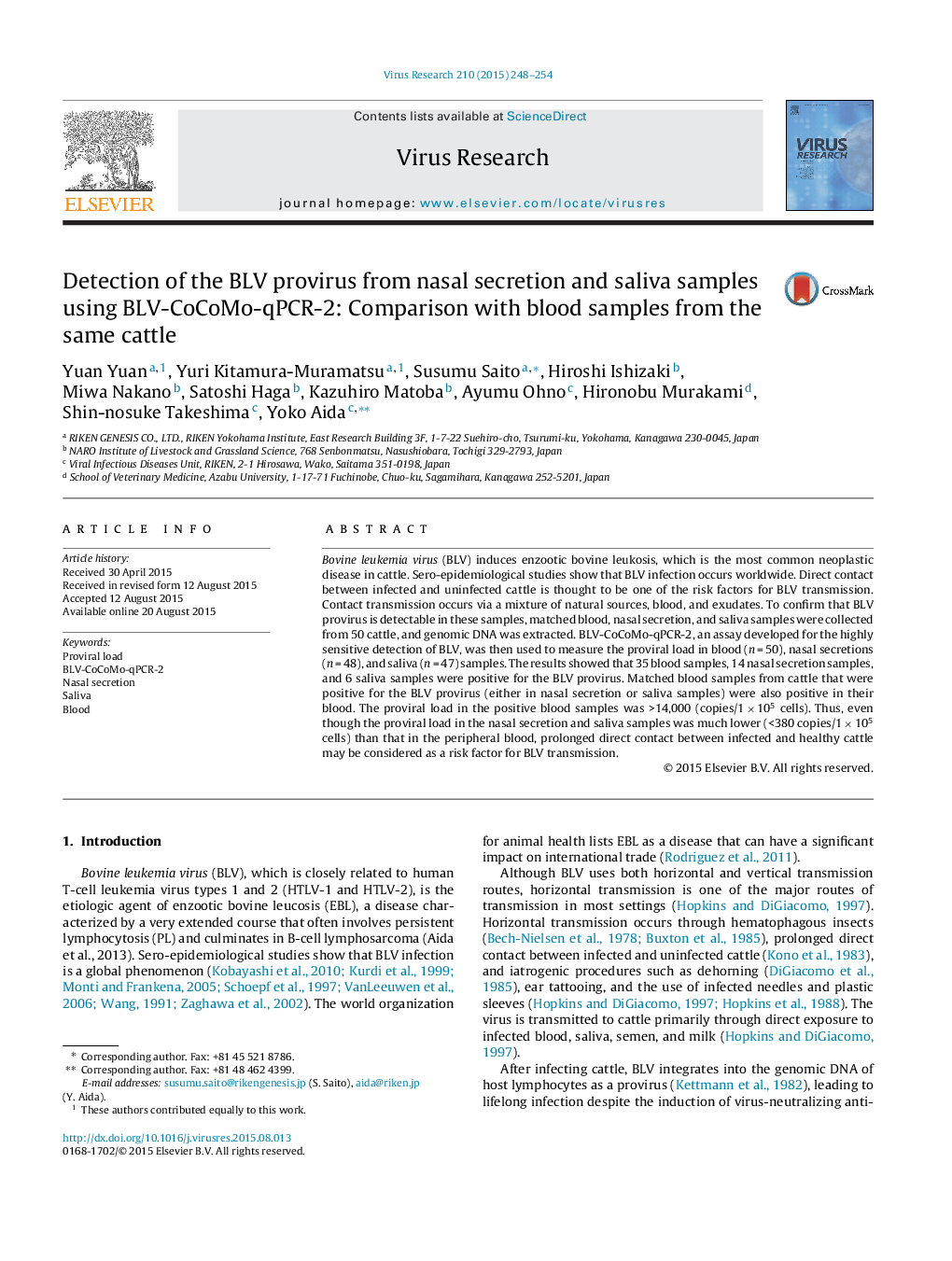| Article ID | Journal | Published Year | Pages | File Type |
|---|---|---|---|---|
| 3428066 | Virus Research | 2015 | 7 Pages |
•The BLV provirus was detected using BLV-CoCoMo-qPCR-2.•We compared the BLV provirus in nasal secretion, saliva and blood samples.•Proviral load in the peripheral blood was much higher than another specimen.•BLV-infected cells might be present in nasal secretions and saliva.
Bovine leukemia virus (BLV) induces enzootic bovine leukosis, which is the most common neoplastic disease in cattle. Sero-epidemiological studies show that BLV infection occurs worldwide. Direct contact between infected and uninfected cattle is thought to be one of the risk factors for BLV transmission. Contact transmission occurs via a mixture of natural sources, blood, and exudates. To confirm that BLV provirus is detectable in these samples, matched blood, nasal secretion, and saliva samples were collected from 50 cattle, and genomic DNA was extracted. BLV-CoCoMo-qPCR-2, an assay developed for the highly sensitive detection of BLV, was then used to measure the proviral load in blood (n = 50), nasal secretions (n = 48), and saliva (n = 47) samples. The results showed that 35 blood samples, 14 nasal secretion samples, and 6 saliva samples were positive for the BLV provirus. Matched blood samples from cattle that were positive for the BLV provirus (either in nasal secretion or saliva samples) were also positive in their blood. The proviral load in the positive blood samples was >14,000 (copies/1 × 105 cells). Thus, even though the proviral load in the nasal secretion and saliva samples was much lower (<380 copies/1 × 105 cells) than that in the peripheral blood, prolonged direct contact between infected and healthy cattle may be considered as a risk factor for BLV transmission.
